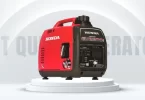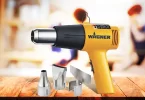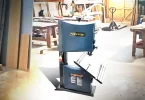A Circular saw is an extremely helpful tool for a professional woodcutter. Its functionality and ease of use are hard to challenge. Actually, there are so many different types of circular saws available that it becomes difficult for an individual to choose the perfect one.
It’s quite essential to pick a circular saw that meets your requirement. Otherwise, you’ll end up wasting energy, time, and money. Further, not all circular saws are cheap so choose one wisely. Now, you won’t have any difficulty in this regard. This post will guide you all about different types of circular saws.
Top 8 different types of circular Saws – Briefly Explained
Skip directly to the respective section
- In Line Circular Saw
- Corded Circular Saw
- Cordless Circular Saw
- Circular Saw for Metal Cutting
- Mini Circular Saw
- Concrete Circular Saw
- Worm Drive Circular Saw
- Hypoid Circular Saw
1: In Line Circular Saw
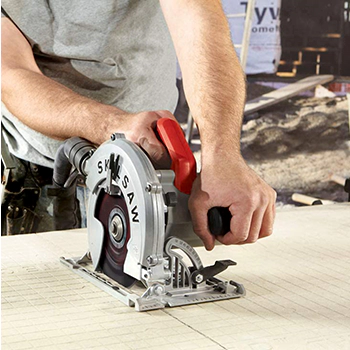

Also known as sidewinder Circular saw, this circular saw is known for its portability and ease of use. The main highlighting aspect here is the placement of the motor and the blade. They both are parallel. So, no extra spacing is required to fit both motor and blade separately.
Because of this order, it is able to generate some severe torque that helps cutting heavy woods. Therefore, several professionals opt for Inline circular saws because of their excellent torque figures. Moreover, its compact arrangement makes it easier to make cuts using a in line circular saw.
So, for your routine projects, the in line circular saw is more than enough.
Pros
- Compact design
- Ample torque
- Easy to use
Cons
- Not ideal for intense cutting tasks
2: Corded Circular Saw
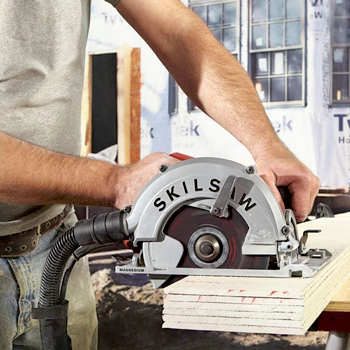

You might say that it’s an understood fact that all circular saws are corded. It is indeed a fact, but cordless ones are now also available, so all other types are classified as corded circular saws. Now let’s talk more about them.
The corded circular saws are no short of raw power. They are powered by an AC (Alternate Current) motor, so they are ideal for cutting denser woods and other demanding tasks. Moreover, almost all professionals opt for corded ones because of the raw power.
Pros
- Great for demanding tasks
- Excellent power output
- Robust design
Cons
- Can be heavy for some
3: Cordless Circular Saw


When we talk about the circular saw, there is just so much variety. But there are just a few saws with circular blades that are cordless. So yes, cordless circular saws are also available for your ease. Now, being a cordless saw, they offer great convenience and are relatively easier to use.
These circular saws are lightweight and helps you make cuts on the go. However, being cordless, they require a battery to power things up. Therefore, their output relies on the battery’s health and the percentage left.
Pros
- Cordless
- Easy to carry
- Lightweight
Cons
- Lacks the raw power a corded circular saw offers
4: Concrete Circular Saw
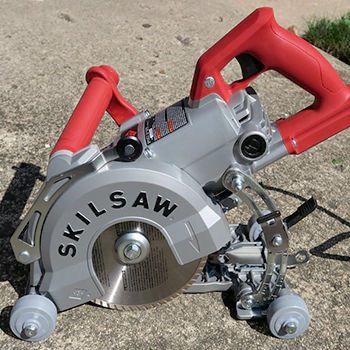

As evident by the name the concrete circular saw is ideal for cutting various concrete and asphalt surfaces. Concrete being rock solid requires a strong machine to cut it down. Therefore, the concrete circular saws pack great power.
It’s one favorite tool of contractors as it helps them cut different concrete blocks with ease. However, the blades these saws come with might not be that ideal. So, when concrete saw is combined with a sharp circular bald, it can perform even better.
Pros
- Rough and tough construction
- Makes cutting construction blocks an ease
- Adequate power output
Cons
- They aren’t cheap
5: Circular Saw for Metal Cutting
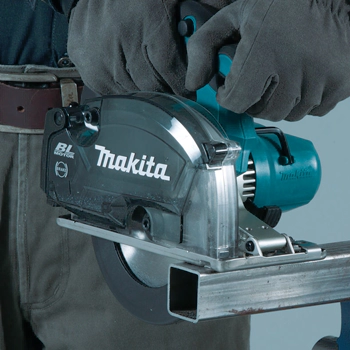

The circular saw for metal cutting does exactly what its name indicates. These saws are used to cut metal parts. Now, metal isn’t easy to cut through. In addition, when you cut metal at higher RPMs (Revolution per minute), the blade can overheat.
Therefore, the metal cutting circular saws come with an electric motor that works at lower RPM to minimize the effect of heat. Now, for some workers, the electric motor with an average power output might not be sufficient.
Apart from the output power, there is nothing to dislike about the metal cutting circular saws. In fact, they are lightweight and helps cut metal with good precision.
Pros
- Lightweight
- Minimizes heat for better cutting experience
- Compact design
Cons
- Average output power
Can You Cut Metal with Circular Saw? Find Out Here.
6: Mini Circular Saw


The mini circular saws are just like a cordless jigsaw, but they run on AC power. They are compact in size, as evident by the name, and are relatively easy to use. The mini circular saw can cut wood, but its electric motor doesn’t offer excellent torque.
Anyhow, that’s not the intended purpose of the circular saws. These circular saws designed for those DIYers and professionals who want an easy-to-use and convenient to carry circular saw.
Pros
- Mini and compact
- No frequent maintenance required
- A safe option for amateurs
Cons
- Not perfect for cutting heavy woods
7: Worm Drive Circular Saw
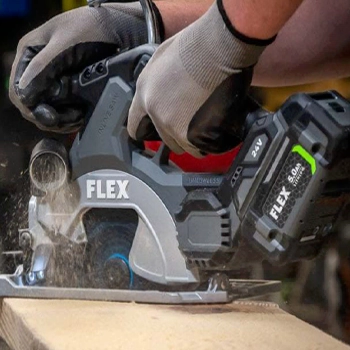

Most of the saws you see in the hands of carpenters are basically the worm drive circular saw. This is because these saws are the most commonly used by professional woodcutters.
Let’s talk about their construction, these cutting machines have a motor at their back. Combined with a sharp but thin blade, their output power is excellent.
For cutting large size woods, the worm drive circular saw is an ideal pick. With their excellent power output and sharp blades, they can cut through all types of woods.
Pros
- Known for its durability
- Excellent power output
- Reliable construction
Cons
- Requires frequent maintenance
8: Hypoid Circular Saw
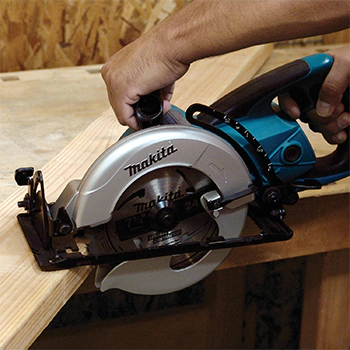

Hypoid circular saws are also another tough type of circular saw that is one favorite saw of professional woodworkers. The only difference between hypoid circular saw and worm drive circular saw is that the hypoid ones don’t require oiling.
So, they are easy to maintain, and their output power is also quite good. In addition, their angle of the blade helps them produce ample torque. All in all, the hypoid circular saw is designed specifically for professional woodcutters.
Pros
- Good torque figures
- Ideal for performing complex cutting tasks
Cons
- Pricing
Conclusion:
So, now you know the different types of circular saws. Of course, all these saws have their own advantages and disadvantages so it might become difficult to choose the best one. But if you know their main highlights, it would become a lot easier.
In the end, your work requirements matter the most. If a particular type fits in well, there is no need to consider the other option.

